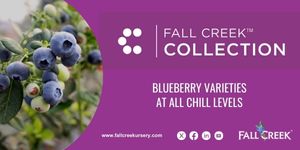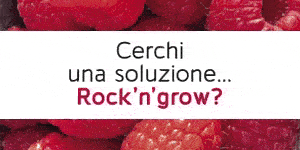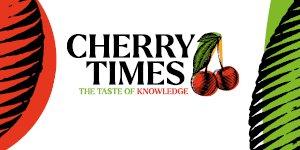SUMMARY TABLE
| VARIETY IDENTIFICATION | |
| Variety trade name | Talisman |
| Product type | blueberry |
| Botanical name | Vaccinium corymbosum |
| Crossbreed parents | Magnolia' × 'Elizabeth' |
| Breeder, variety breeder | U.S. Department of Agriculture, Agricultural Research Service (USDA-ARS) |
| Commercial licence | Public domain |
| Typology blueberry | Highbush |
| Year of first commercial installation | 2013 |
| ORGANOLEPTIC CHARACTERISTICS | |
| Berry size | Large |
| External colour | Light blue |
| Taste | Gentle (rated 7.1 out of 9) |
| Brix | 10.7 °Brix ± 1.4 |
| Acidity | 0.94% citric acid eq. ± 0.43 |
| Pulp consistency | 194 g/mm dfl ± 22 |
| Shelf-life post-harvest | Better than Duke |
| Crunchiness | 7.2 for 'Talisman' vs. 7.7 for 'Duke' on a scale of 1-9 |
| AGRONOMIC CHARACTERISTICS: CLASSIFICATION | |
| Seasonality | Late |
| Typology | Northern highbush |
| AGRONOMIC CHARACTERISTICS: PRODUCTION | |
| Productivity | Very good |
| Production alternation | Low alternation |
| Collection | Manual, Mechanical |
SUMMARY
"'Talisman' is a new cultivar of blueberry Northern Highbush (Vaccinium corymbosum) developed by the United States Department of Agriculture, Agricultural Research Service (USDA-ARS). The new cultivar has several advantageous characteristics for growers of blueberries in the northern United States: reliable productivity, excellent yields, late season ripening, medium to large fruit, uniform size, light blue fruit colour, and easy fruit removal making it suitable for mechanical harvesting. "'Talisman' is released as a public domain cultivar.
ORIGIN AND DESCRIPTION
'Talisman' originated from a cross between 'Magnolia' × 'Elizabeth', and was tested as ARS 05-171. 'Magnolia' is a cultivar of blueberry Southern Highbush (USDA, 1994) and is derived from a cross between Fla 78-15 × Fla 72-5. "'Elizabeth' is a Northern Highbush cultivar released by New Jersey (New Jersey Blueberry Council, 1966) and is derived from crossing ('Katherine' × 'Jersey') × 'Scammell'. Based on this parentage, 'Talisman' is estimated to be ≈87% V. corymbosum L. and ≈13% other species, mainly V. darrowii Camp. (5%) and V. virgatum Ait. (syn. V. ashei Reade) (≈4%), with small amounts of other species (Brevis et al., 2008; Ehlenfeldt, personal communication).
The cross that gave rise to 'Talisman' was made in 2000 by M.K. Ehlenfeldt at the Philip E. Marucci Center for Blueberry and Cranberry Research and Extension (Rutgers University), Chatsworth, NJ. "Talisman" was selected in 2005 at the same location, and was subsequently evaluated in farm trial fields in Hammonton, NJ by M.K. Ehlenfeldt and R.B. Martin Jr. from 2013 to 2019.
COMPARATIVE QUALITY PARAMETERS
"Talisman is a late maturing cultivar with concentrated ripening, suitable for production by commercial growers.
COMPARISON BETWEEN TALISMAN AND DUKE
For comparison, 'Talisman' was initially compared to 'Duke', an early season commercial quality standard (Draper et al., 1987). Numerical ratings of 'Talisman' compared to 'Duke' in 2010-2015 showed 'Talisman' equal to or better than 'Duke' in most fruit quality traits, with the exception of firmness. For this trait, 'Duke' was rated as firmer (7.2 for 'Talisman' vs. 7.7 for 'Duke' on a scale of 1 to 9) (Table 1). It is worth noting that both cultivars were sweet tasting (7.1 for 'Talisman'; 6.7 for 'Duke'). The productivity of both cultivars was very good (>7; scale 1-9).

In detailed evaluations against 'Duke', the early season quality standard, 'Talisman' showed excellent yields, although slightly lower than 'Duke' (5.8 kg/plant vs. 6.2 kg/plant) (Table 3). 'Talisman' showed larger berry size (2.0 g ± 0.5), higher firmness (194 g/mm dfl ± 22), higher soluble solids (10.7 °Brix ± 1.4), and higher titratable acidity (0.94% citric acid eq. ± 0.43) than 'Duke', but values for all these traits were generally comparable. Although 'Talisman' had higher firmness values than 'Duke' in commercial farm evaluations, 'Duke' retained its firmness and softened less after harvest than 'Talisman' and was therefore superior in long-term storage quality. Both 'Talisman' and 'Duke' are considered mild in flavour, and are significantly less acidic than medium-maturing cultivars such as Bluecrop or medium-late cultivars such as Liberty. Due to its mild flavour, 'Talisman' should benefit from pre-harvest water restriction whenever possible to concentrate both acids and sugars. Similarly, growers have recognised that limiting potassium fertilisation can improve grape acidity levels (Mpelasoka et al., 2003); such potassium manipulation could benefit cultivars such as Duke and Talisman.

COMPARISON BETWEEN TALISMAN AND LIBERTY AND ELLIOTT
Similar numerical evaluations of 'Talisman' against two commonly grown late maturing cultivars, Liberty and Elliott, showed that 'Talisman' matured in sync with 'Liberty' and with higher yields, but exhibited lower firmness and flavour than 'Liberty' (Table 2). "'Talisman' was superior to 'Elliott' in nominal traits, but 'Elliott' was a better choice if a truly late maturing cultivar was desired.

PLANT CHARACTERISTICS
"Talisman' is suitable for production in areas where blueberries tall trees are typically grown. Its flowering time is very late (similar to that of 'Elliott'), and therefore probably avoids problems with spring frosts.

The flowers of 'Talisman' are elongated and coarsely urceolate-cylindrical, with delicate pink highlights near the base of the corolla (Fig. 2). Pollination tests have shown it to be highly self-fertilising, suggesting that it will be suitable for planting in solid blocks in the field. The fruit develops uniformly, and the plant produces compact, well-exposed clusters of uniformly sized fruit that ripen in a concentrated late-mid season ('Liberty'/'Jersey' season) (Fig. 3). Subjective evaluations show that 'Talisman' has an easy fruit removal force at harvest, potentially suitable for mechanical harvesting.
Talisman' plants are vigorous and robust, with a rounded growth habit and a narrow base (Fig. 4). The plants tend to have a massive growth habit and may need assertive management at a young age to induce sufficient branching to form a balanced bush and to avoid producing a monopodial plant. "'Talisman' showed good resistance in the field to both stages of the fungal disease 'mummy berry', Monilinia vaccinii-corymbiosis (Scherm and Hildebrand, 2017) (blight was rated 1 on a scale of 1 to 5, comparable to 'Bluecrop' and 'Legacy'; mummy berry infection is low).

AVAILABILITY
"Talisman is released as a public domain cultivar by the USDA-ARS, and as such can be freely propagated and grown without licensing restrictions. It is released unconditionally without any guarantee as to its performance or adaptation to specific environmental or cultural conditions. The U.S. Department of Agriculture, Agricultural Research Service has no plants for distribution, but can provide information on propagation sources for interested nurseries, breeders or researchers. Enquiries should be directed to Dr. Mark Ehlenfeldt, Philip E. Marucci Center for Blueberry and Cranberry Research and Extension, 125A Lake Oswego Road, Chatsworth, NJ 08019 or Mark.Ehlenfeldt@usda.gov. The genetic material of 'Talisman' will be deposited in the National Plant Germplasm System, where it will be available for research purposes, including the development and commercialization of new cultivars. Appropriate recognition is required if this germplasm contributes to the development of a new breeding line or cultivar.











